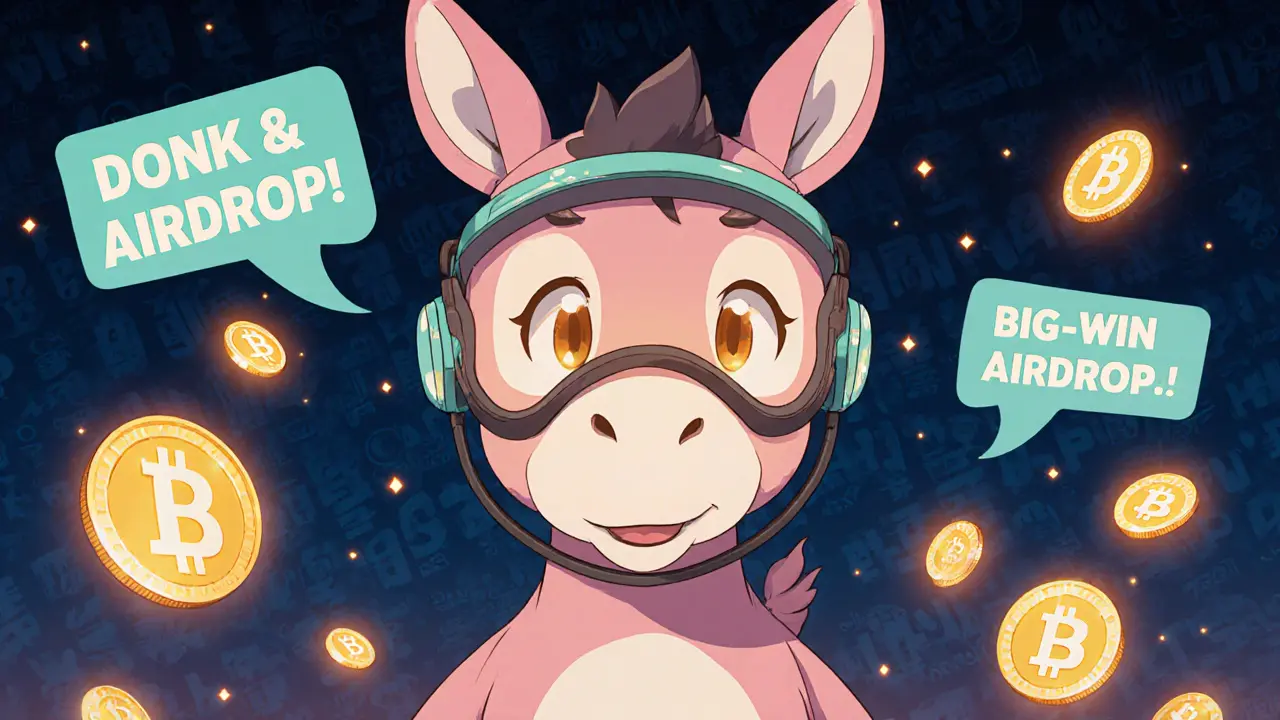Donkey Token – Full Guide, Tokenomics & Market Insights
When diving into Donkey Token, a meme‑style cryptocurrency built on the Ethereum blockchain. Also known as DONK, it rides the wave of internet humor while offering real on‑chain functionality.
Behind the jokes, ERC‑20, the technical standard that defines how tokens behave on Ethereum powers Donkey Token. This standard lets wallets, DEXs and DeFi apps recognize DONK without extra code. Because it follows ERC‑20, the token can be swapped instantly, staked in liquidity pools, or bundled into yield farms.
Another piece of the puzzle is the crypto airdrop, a distribution method that sends free tokens to eligible addresses. Donkey Token has run several airdrops to kickstart community growth. Those events lowered the entry barrier, attracted meme enthusiasts, and seeded liquidity on early‑stage exchanges.
The underlying blockchain, a decentralized ledger that records every transaction ensures transparency and immutability. Every DONK transfer is publicly verifiable, which builds trust even when the brand leans on humor.
Key attributes that define Donkey Token
First, tokenomics. Donkey Token caps supply at 1 billion units, with 40 % allocated to the community via airdrops and liquidity incentives. The remaining 60 % is split among developers, marketing, and a reserve fund for future upgrades. This split aims to keep price pressure low while funding growth initiatives.
Second, utility. Beyond being a meme, DONK powers a community voting system that decides which charitable causes receive monthly donations. Holders stake their tokens in a governance pool, earn modest rewards, and influence fund allocation.
Third, market access. Donkey Token lists on several decentralized exchanges like Uniswap and PancakeSwap, and a handful of centralized platforms have added it to their roster. Because it complies with ERC‑20, adding a new trading pair is a matter of smart contract approval, not a full integration overhaul.
Fourth, risk profile. Meme tokens are notorious for wild price swings. Donkey Token’s price can surge on viral social media trends, then dip sharply if hype fades. Investors should balance the fun factor with a solid risk‑management plan, such as setting stop‑loss orders or limiting exposure to a small portfolio share.
Fifth, regulatory outlook. While Donkey Token itself faces no direct bans, global crypto regulations affect how exchanges list and trade it. In jurisdictions with strict AML/KYC rules, users may need to verify identity before swapping DONK. Keeping an eye on regulatory updates helps avoid frozen assets or unexpected tax liabilities.
Sixth, community dynamics. The Donkey Token Discord and Telegram channels act as the primary news hubs. Community polls decide airdrop eligibility thresholds, while meme contests drive organic growth. Strong community engagement often translates into higher liquidity and more stable pricing.
Seventh, security considerations. Because DONK lives on Ethereum, it inherits the network’s robust security model. However, smart‑contract bugs or phishing scams targeting airdrop claims can jeopardize funds. Users should double‑check contract addresses, avoid unknown links, and use hardware wallets for large balances.
Putting it together, Donkey Token encompasses meme culture, requires the ERC‑20 standard, benefits from crypto airdrops, and runs on a transparent blockchain. Those relationships form the backbone of its current market behavior.
What you’ll discover next is a curated set of articles that break down each of these facets. From detailed token‑economics breakdowns to step‑by‑step airdrop verification guides, the collection below gives you practical tools to assess, trade, or simply enjoy Donkey Token responsibly. Dive in and explore the full landscape of this quirky yet technically sound crypto project.
- October 20, 2025
- Comments 4
- Cryptocurrency

